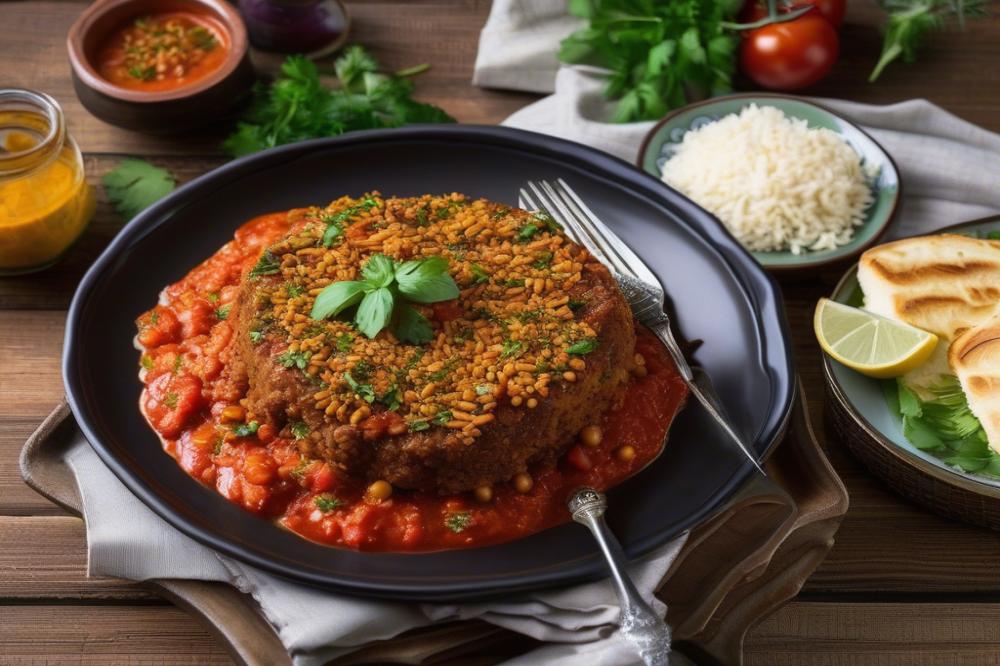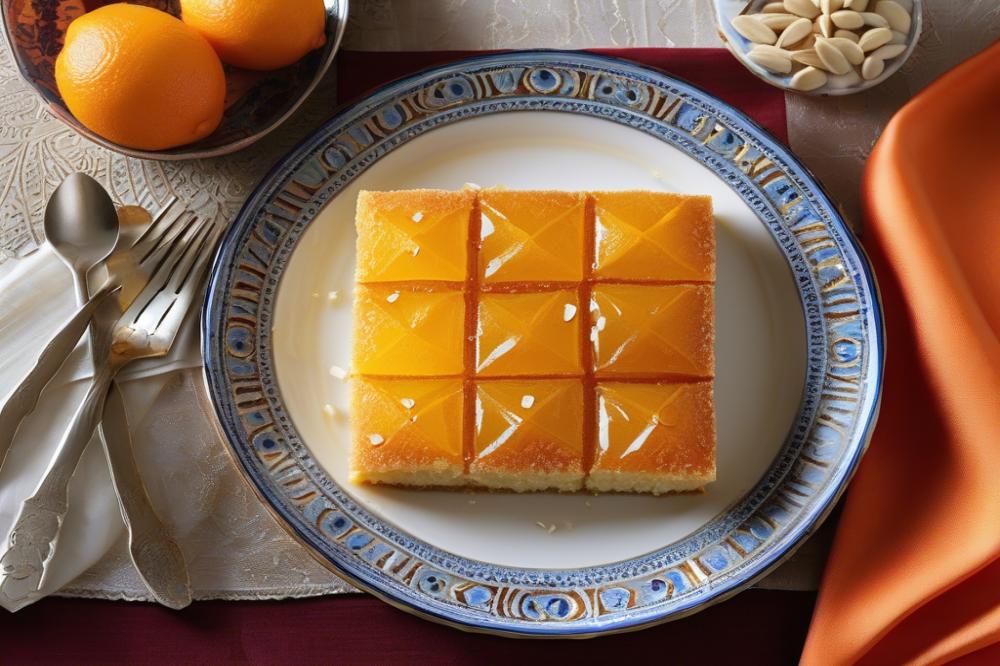Introduction to Ras el Hanout
Ras el Hanout is a fascinating spice blend that holds a special place in North African cuisine. This aromatic mixture combines various herbs and spices, creating a rich tapestry of flavors that enhances many traditional dishes. Chefs and home cooks alike use it to bring depth and warmth to their meals.
Its importance in the kitchen cannot be overstated. In Morocco, this seasoning is more than just a flavor enhancer; it signifies hospitality and creativity. Every region has its own version, using local ingredients to craft a unique blend. This variance reflects the rich culinary traditions of the area, showcasing the diverse palate of Moroccan spices.
Ras el Hanout often symbolizes a connection to cultural heritage. Family recipes passed down through generations often incorporate this spice blend, making it a key component of everyday life. It is commonly featured in tagines and couscous dishes, contributing to the exotic flavors that characterize Moroccan cuisine. Cooking tips for using it often suggest starting with a small amount, allowing its bold notes to shine without overwhelming the dish.
In essence, this spice blend not only elevates the taste of meals but also tells a story. It invites people to experience the heart of Moroccan culinary traditions, making every bite an exploration of history and flavor.
What is Ras el Hanout

Definition and Meaning of Ras el Hanout
Ras el Hanout is a traditional spice blend central to North African cuisine. The name translates to “head of the shop,” indicating it contains the finest spices from a merchant’s collection. This aromatic blend is more than just a seasoning. It represents a culinary tradition passed down through generations, each offering its own twist.
Composition of the Spice Blend
A typical recipe for this spice blend varies widely. The exact combination of its components often depends on the region and the cook’s preferences. Some common herbs and spices include cumin, coriander, cinnamon, and cardamom. The blend may also incorporate ginger, turmeric, and sometimes even rose petals or saffron. The possibilities are nearly endless, allowing for a mix that is both complex and rich.
Typical Herbs and Spices Varieties Used
Cooks often favor certain herbs and spices in their creations. Cumin remains a popular choice due to its warm flavor. A dash of paprika might add a hint of heat. Coriander lends a fresh, citrusy note. Nutmeg and allspice also make appearances, contributing to the blend’s depth. Each ingredient plays a critical role in enriching traditional dishes.
Regional Variations of Ras el Hanout
In Morocco, the blend’s ingredients can differ by region. Coastal areas might feature more aromatic herbs. Meanwhile, inland varieties could be heartier, reflecting the local availability of spices. Some regions might even add ingredients like dried fruit or chili for a twist. Understanding these regional variations provides insight into the diverse culinary traditions of North Africa. Cooking tips often suggest trying different versions to find your favorite flavor profile. Exploring these exotic flavors enhances any dish you prepare.
Classic Moroccan Recipes Featuring Ras el Hanout

Cooking delicious Moroccan dishes can be an enlightening experience. One such dish is the famous Chicken Tagine, which perfectly showcases the rich culinary traditions of North African cuisine. Below is a list of ingredients needed to craft this aromatic masterpiece.
Ingredients List:
- Chicken: 1.5 kg
- Ras el Hanout spice blend: 2 tablespoons
- Olive oil: 3 tablespoons
- Onion: 1 large, diced
- Garlic: 4 cloves, minced
- Carrots: 2, sliced
- Dried apricots: 100 g, chopped
- Almonds: 50 g, toasted
- Chicken broth: 500 ml
- Fresh coriander: for garnish
Cooking Instructions:
Start by heating the olive oil in a large tagine or heavy pot over medium heat. Once the oil is hot, add the diced onion and sauté until it becomes soft and translucent, around 5 minutes. Adding minced garlic will enhance the flavor, so mix it in and stir for another minute.
Next, place the chicken pieces into the pot. Sprinkle the aromatic blend over the chicken evenly. Make sure to coat the chicken with the seasoning. It’s crucial to allow the spices to infuse into the meat. After a few minutes, stir in the sliced carrots, chopped dried apricots, and toasted almonds.
Pour the chicken broth into the pot to create a flavorful base. Bring the mixture to a boil, then reduce the heat to low. Cover the tagine or pot and allow it to simmer gently for about 1.5 hours. During this time, the chicken will become tender, and the sauce will take on complex flavors.
Right before serving, chop fresh coriander and sprinkle it over the dish for a fresh, herbal touch. This not only enhances the presentation but also adds a crisp flavor that complements the rich spices.
Nutritional Information:
Here’s a breakdown of the nutritional content of the ingredients:
- Chicken (1.5 kg): Approximately 3300 calories, 230g protein, 250g fat
- Ras el Hanout (2 tablespoons): About 40 calories, negligible protein and fat
- Olive oil (3 tablespoons): Roughly 360 calories, 0g protein, 40g fat
- Onion (1 large): About 60 calories, 1g protein, 0g fat
- Garlic (4 cloves): Approximately 20 calories, 1g protein, 0g fat
- Carrots (2 medium): Roughly 50 calories, 1g protein, 0g fat
- Dried apricots (100 g): Around 240 calories, 2g protein, 0g fat
- Almonds (50 g): Approximately 290 calories, 10g protein, 25g fat
- Chicken broth (500 ml): Roughly 20 calories, 1g protein, 0g fat
- Fresh coriander (for garnish): Negligible calories and nutrients
Exploring the spices variety in Moroccan cooking opens up a world of exotic flavors. This Chicken Tagine recipe is just one of many traditional dishes that highlight the magic of herbs and spices.
Exploring the Exotic Flavors of Ras el Hanout

This spice blend plays a vital role in enhancing traditional dishes. Widely used in North African cuisine, it elevates the flavors of meats, vegetables, and stews. Its use reflects the rich culinary traditions that have been passed down through generations. Many cooks find that adding this seasoning transforms the ordinary into something aromatic and exciting.
Taste Profiles and Aromatic Blend Characteristics
A wide variety of spices create a complex flavor profile. Ingredients may include cumin, coriander, cinnamon, and paprika, among others. This aromatic blend can impart both warmth and depth to dishes. Some blends even incorporate delicate herbs like rose petals or dried lavender, adding a hint of floral fragrance. With such complexity, every pinch introduces exotic flavors that delight the senses.
Pairing Tips with Different Dishes and Beverages
Certain dishes pair remarkably well with this spice blend. Think of tagines, where meats slow-cooked with vegetables absorb all the rich flavors. It works wonderfully in couscous, adding character to this staple. For those who love to experiment, sprinkle it on roasted vegetables for a burst of taste. When selecting beverages, consider serving it alongside Moroccan mint tea or a light-bodied red wine. Both can complement the spices beautifully.
Cooking Tips for Using Ras el Hanout
How to Incorporate in Everyday Cooking
Experimenting with this spice blend can elevate your meals. Start by adding a teaspoon to stews for an added depth of flavor. Marinades benefit greatly from this aromatic blend; try mixing it with yogurt and olive oil for a chicken marinade. Roasted vegetables will surprise you when tossed with this seasoning before baking. Consider sprinkling it over popcorn for a unique snack. Enhancing grains and legumes can also bring new life; add it to rice or couscous while cooking to infuse the dish with exotic flavors.
Storage Recommendations for Freshness
Keeping the spice blend fresh is essential for maximum flavor. Store it in an airtight container, placed in a cool, dark place away from light and heat. Glass jars are ideal for this purpose. Checking for freshness regularly is also wise; if the aroma fades, it may be time to replace it. Avoid storing near your stove to protect its quality. Labeling the jar with the purchase date can help you monitor its lifespan.
Creative Ways to Use the Spice Blend
There are many innovative ways to use this spice variety beyond traditional dishes. Add a pinch to your pancake or waffle batter for an unexpected twist at breakfast. Consider mixing it into salad dressings to spark interest in greens. A sprinkle on roasted nuts can turn a simple snack into a gourmet experience. Try infusing olive oil with the herbs and spices to create a flavorful dipping oil for bread. Each of these ideas gives you a chance to explore culinary traditions while keeping your meals exciting.
Final Thoughts on Ras el Hanout
This spice blend holds a special place in Moroccan dishes and culture. It serves as a bridge between history and modern culinary practices. Each family may have its own take on this mixture, showcasing personal stories and traditions. The flavors found in Ras el Hanout are not only about seasoning food; they tell stories of the land and its people.
Exploring this blend can be an adventure in your kitchen. Every pinch adds depth to dishes, transforming ordinary meals into something extraordinary. Experimenting with various combinations can lead to new recipes that surprise and delight. Don’t hesitate to mix it with other ingredients like meats, vegetables, or grains. Let your creative side shine when using it.
Celebrating North African cuisine allows us to appreciate its rich heritage. Sharing meals that utilize this mix creates a connection with a vibrant culture. Each dish is a celebration of flavors and shared experiences. As you dive into the world of spices, remember that every sprinkle of Ras el Hanout can evoke the warmth of Moroccan hospitality. Enjoy the culinary journey ahead!



